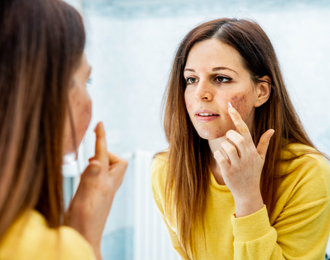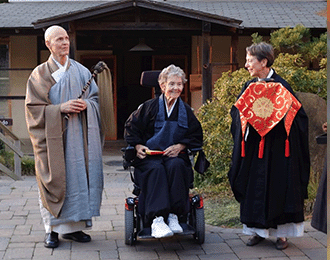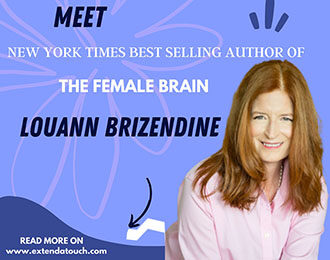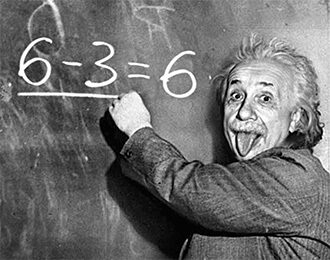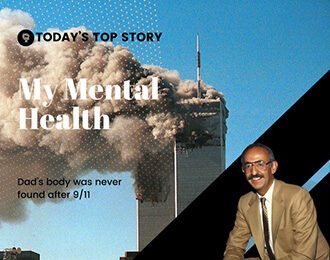What is Positive Aging? 10 Tips to Promote the Positive Aspects of Aging

PositivePsychology.com – Updated for November 2021
Author: Kori D. Miller
How do you feel about growing old? For some, it’s a scary time filled with change and loneliness. But it doesn’t need to be that way. In fact, it shouldn’t. We’re social creatures and growing old isn’t a solo sport. That’s what positive aging is all about.
How we choose to define, view, and accept the changes is crucial to our ability to “age gracefully.” Positive aging allows us to weather the expected and unexpected changes we experience.
We’re living longer. How will you plan and prepare for the next decades of your life?
What is Positive Aging?
This is an interesting question. Worldwide cultures don’t define it the same way. Those who revere their elders look to them for wisdom and guidance. These cultures don’t see their elders as a burden or hinderance. They respect them.
Other cultures — those who value youth and physical beauty more than the wisdom that can come with age — have a different perspective. Oftentimes, it’s those in this group who choose to fight aging.
Aging is inevitable. We all know this to be true, but as you continue reading, you will learn that some people believe aging is a disease. They believe it’s curable.
For now, though, here are a few current definitions of positive aging.
The UK
A way of living rather than a state of being (Positive Ageing, n.d.).
Australia
“The process of maintaining a positive attitude, feeling good about yourself, keeping fit and healthy, and engaging fully in life as you age” (Positive Psychology Institute, n.d.).
New Zealand
“Positive aging reflects the attitudes and experiences older people have about themselves and how younger generations view the process of aging. It takes into account the health, financial security, independence, self-fulfillment, personal safety and living environment of older New Zealanders” (Ministry of Social Development, 2001).
The U.S.
“Successful aging is multidimensional, encompassing the avoidance of disease and disability, the maintenance of high physical and cognitive function, and sustained engagement in social and productive activities” (Rowe & Kahn, 1997).
World Health Organization (WHO)
“The process of developing and maintaining the functional ability that enables wellbeing in older age” (WHO, 2020).
Japan
“Japanese conceptions of aging are rooted in Buddhist, Confucian, and Taoist philosophical traditions that characterize aging as maturity. Old age is thus understood as a socially valuable part of life, even a time of “spring” or “rebirth” after a busy period of working and raising children” (Karasawa et al., 2011).
China
“The criteria are sufficiently inclusive, encompassing physical health, mental health, social engagement, and nutritional status, which in principle are in conformity with both the WHO definition and the Rowe and Kahn model” (Zhou, Liu, & Yu, 2018; referencing the Chinese health criteria for the elderly).
Eastern Europe
“Active aging is concerned with facilitating the rights of older people to remain healthy (reducing the costs of health and social care), remain in employment longer (reducing pension costs), while also participating in community and political life” (Foster & Walker, 2015).
Successful aging and active aging aren’t defined the same way worldwide. The former tends to follow the definition put forth by Rowe & Kahn (1997). The latter is akin to a life course-oriented perspective (Foster & Walker, 2015). See the section titled, “Positive Aging Theories” later in this article. Also, note that positive aging is closer to the definition of active aging.
These terms are sometimes used interchangeably. So, it’s good to know where the research originates. Other terms you might read are healthy aging, positive aging, productive aging, and competent aging (Foster & Walker, 2015). Again, each differs in meaning, but successful and active aging dominate the research.
Cathleen Toomey discusses the upside of aging in her Tedx Piscataqua River talk, The Secret of Successful Aging. The key? Don’t let loneliness take over your life. Real conversations are the answer. We’re social beings and need to stay connected to others.
She also suggests these three things:
- Celebrate your age
- Defy expectations
- Grow friendships
Economies and Opportunities
You might be curious why this is such a hot topic. WHO estimates that by the year 2050, the number of people over the age of 60 will be 2 billion. By 2020 this age group will outnumber children less than 5 years old.
Because people are living longer, many countries must adapt their health policies. Now more than in the past, we must consider how to better assist the transition from middle to old age. We must also reevaluate what “old” means.
As campaigns encourage engaging in an active lifestyle, more older adults continue working. This can ease the burden placed on pension programs. It also creates business opportunities.
The greying of societies shift the economic focus. Businesses can develop products and services to address the needs of older adults. For example, socially assistive robotics (SARs) have been in development since 1980. Honda conducted research that led to the creation of Asimo. It became the first humanoid robot to walk, climb stairs, and have the ability to interact based on predefined constructs (Miller, 2017).
A Look at the Psychology of Aging
Aging can be difficult to accept. Our body might not be able to do the things it did when we were young. Bones break easier. Aches and pains can be a daily occurrence. Our vision becomes impaired. Our hair turns grey or white. Sometimes it falls out. Our noses and ears stretch. We get shorter.
These experiences have a psychological impact on us. This is especially true in cultures that don’t revere their elders.
As we age and become less valued in our society, we struggle to find our place. We have to redefine who we are and identify our purpose. As you’ll read later in this article, this is important if you want to be a centenarian.
By 2030, it’s estimated that 15 million older adults will need mental and behavioral care (APA, n.d.). Coping with one’s disease or the disease of a loved one can lead to anxiety and depression. The loss of autonomy and loneliness also contributes to poor mental health.
Older adults might need help managing day-to-day activities that they used to do themselves. This can lead to frustration, anger, and family conflicts. Grieving a life partner is another reality of growing older.
Each of these instances, and others, can cause a person to experience a mental health disorder.
Geropsychologists specialize in providing care to older adults. They work in private practice and in health care facilities. These psychologists research the aging process, and design and test interventions. Their goal is to help the older adult overcome a problem and increase their well-being.
The Principles and Philosophy Behind Positive Aging
Greek philosophers wrote about aging. The Bible talks about aging. The Romans and Cicero “idealized old age” (Martin et al., 2015). Martin and his colleagues discuss aging from a cultural perspective first.
They explore the similarities between the last two stages of the Hindu model of the life span with more contemporary scholars. In their article, Defining successful aging: A tangible or elusive concept? the authors explain the history of theories contributing to positive aging.
The theorists they discuss are:
Jung who considered late life as a time to look inward.
Erikson’s eighth stage called integrity versus despair. Successful aging involves an “evaluation of one’s life as having been fulfilling and satisfying” (Martin et al., 2015).
Neugarten who agreed with Jung’s perspective. Later, she agreed with Reichard, Livson, and Peterson, that personality is important in the study of successful aging.
Havighurst’s focus was satisfaction and happiness as the basis for defining successful aging. He believed aging is either active or disengaging. Active means a person carries over activities and attitudes from middle age into later life. Disengaged means the person desires to remove him-herself from an active life. He’s credited with coining the term “successful aging” (Zhou et al., 2018).
Reichard, Livson, and Petersen defined successful aging as “being well-adjusted.” Their research, published in 1962, focused on 87 men and personality traits. The researchers identified the following as well-adjusted retirement types: the mature; the rocking chair; and, the armored.
Rowe and Kahn‘s three-factor model is the one many follow today. Their focus is freedom from disease, remaining cognitively and physically adept, and social engagement.
Their model marked the beginning of discussions about successful aging. Prior research had centered on illness, disease, and decline in old age (Foster & Walker, 2015). It didn’t consider that older adults could thrive.
Not everyone agrees with Rowe and Kahn. Stowe and Cooney (2015) view successful aging from a life course perspective.
This approach looks at life as:
“a dynamic lifelong process, embedded in historical time and place, and influenced by the web of relationships individuals are linked to, as well as more distal social factors.”
In a nutshell, their perspective is holistic.
In several countries, the definition put forth by WHO tends to guide policy decisions.
Health for All is “values-based and values-driven” (WHO, 2005). It demands equity in the pursuit of one reaching one’s full health potential. The policy promotes collective responsibility (solidarity) and participation.
The vision of Health for All encompasses four areas:
- Patient care.
- Prevention which includes immunizations, monitoring, and early detection.
- Promotion of healthy lifestyles focused on educating people about the importance of exercise and nutrition. It also addresses the use of drugs and alcohol.
- Addressing health determinants focuses on society at large. It considers the physical, social, and economic factors affecting health (WHO, 2005).
What Does the Research Say?
This is the only information you need to read today about successful aging. It’s a “drop the mic” moment.
It all begins with Elizabeth Blackburn’s childhood fascination with life. She wanted to know everything she could about chromosomes. Blackburn was specifically interested in the ends where the telomeres are.
She wanted to know what’s inside telomeres, but she needed a lot of them to figure this out. Pond scum was the answer.
Every time DNA gets copied in humans, the telomeres at the ends get worn down. She learned that telomeres found in pond scum don’t shorten. Blackburn set out to find out what kept them from shortening and dying off.
As she studied, her research led to the discovery of telomerase. This is an enzyme that fixes the caps at the end of our chromosomes.
The shortening of telomeres is what creates the signs of aging. For example, grey hair, wrinkles, and a weak immune system. The longer our telomeres, the less the effects of aging.
How do we get more telomerase? On the surface, it’s not an easy answer. As she points out, we can’t go to Costco (or Amazon) and buy a big jug of telomerase.
Having less leads to certain diseases associated with aging, but too many increases our risk of some cancers.
We all want to live longer. She defines health span as the number of years we’re healthy, disease-free, and have a zest for life. How do we do that? And, what role can or do telomeres play?
Blackburn, along with a fellow researcher, set their sights on a real-world telomeres question.
What happens to people under consistent and constant psychological stress?
They studied caregivers whose children had a chronic condition. The more years a mother cared for their child, the shorter their telomeres. The woman’s age didn’t matter. The more the mother perceived her situation as stressful the less telomerase she had.
Some mothers maintained their telomeres. They were resilient and viewed their situation as a challenge. This reduced their perceived stress. Life events and the way we respond to them is something we can control.
She and her research partners received the 2009 Nobel Prize in Physiology or Medicine. Over 10,000 papers up to 2017 support Blackburn’s findings.
What can we do?
One study she referenced used meditation. The caregivers practiced for 12 minutes/day for two months. This improved their maintenance level of telomeres.
Change your attitude. If you’re negative, your body gets a surge of the stress hormone cortisol. This hurts your telomerase and telomeres.
Approaching stressful situations as a challenge, creates a surge of cortisol, too. But, in this case, it’s temporary and useful. Your telomeres are fine.
Can outside factors affect our telomeres? Are they social?
Violence, bullying, and racism have a long-term negative affect on a person’s telomeres. People living in dangerous neighborhoods with no sense of community, have shorter telomeres.
Healthy communities, being in a marriage long-term, and having lifelong friendships, maintain telomeres.
We affect each other.
Negative Beliefs on Aging
Stereotypes are “unchallenged myths or overstated beliefs” (Dionigi, 2015, p. 1) about a group. These beliefs become entrenched in verbal, written and visual media. Stereotypes affect the self-perception of individuals within the group. This can be negative or positive.
There are many stereotypes associated with aging, particularly in Western cultures. Some are negative. For example, older people are frail, forgetful, can’t drive, and are slow. Old people are always sick. They live in nursing homes. Elderly people can’t learn anything new. These are a few examples.
The adjectives used to describe anyone over the age of 55 are potentially negative. They can contribute to negative stereotyping. Terms such as elderly, old, old-old, oldest-old, seniors, old people, and the aged don’t speak to the wealth of knowledge this population contributes.
Stereotypes of aging: Their effects on the health of older adults (Dionigi, 2015) is an excellent resource. Its focus is the physical and mental aspects of stereotyping, and the well-being and perceived quality of life of older adults. Dionigi (201 5)explores the theory and method of various studies in the review.
Dionigi (2015) uncovers several disturbing findings. Among them are that the pervasiveness of negative stereotypes in Western culture affects older adults’ cognitive and physical performance and recovery from disease.
The older adult may also be part of another marginalized group. This compounds the negative stereotype issue. An important aspect of Dionigi’s (2015) review is it highlights the need to study a person’s holistic health from this perspective.
Ashton Applewhite tackles ageism, the ultimate negative stereotype, in a TedTalk, “Let’s end ageism.”
WHO (2016) conducted a World Values Survey to assess the level of discrimination and negative attitudes toward older adults. Their analysis revealed that “60% of respondents reported that older people aren’t respected.” The survey included responses from 83,000 people in 57 countries. High-income countries had the lowest level of respect for older adults.
The report from WHO echoes Dionigi’s findings. Negative perceptions and treatment of older adults contribute to a downward health spiral.
Dr. William Thomas specializes in caring for older people. There are only 6000 geriatricians in a population of 300 million in the U.S. Geriatricians are rare. The number of specialists has declined as the number of older Americans is rising. The reason? He believes it’s ageism.
American society, unlike some other cultures, has extended the cycle of adulthood. Baby Boomers want to remain in that stage as long as possible to avoid the labels, ‘old,’ ‘older,’ and ‘senior.’
He advocates a redesign of the human life cycle. In his words, “We’re living in a society of adults without elder supervision.” This has happened because of our obsession with youth. It’s time for Elderhood Rising – the dawn of a new world age.
How Does the Definition of Well-being Change For Older Adults?
There’s no consensus around a definition of well-being. At its core it is, “judging life positively and feeling good” (CDC, n.d.). From this perspective, any major life event can positively or negatively affect it. Age doesn’t matter.
From a general perspective, cultural differences predict subjective well-being (SWB). These include, cultural differences about the wealth of a nation and its effect on SWB. Some studies show that people in wealthier countries don’t feel more positive emotions. They think they’re happier, but they’re not when compared to people in poorer countries. Personal factors predict emotional well-being (Suh & Choi, 2018).
There also are cultural differences in defining happiness. Several studies compare collectivistic and individualistic cultures. The former tend to view it from an external, societal vantage point. The latter takes a more internal, personal perspective (Suh & Choi, 2018).
To further complicate definitions of SWB, not all cultures agree about how desirable or necessary happiness is. For example, Western culture prizes it, but East Asian and Islamic cultures don’t.
Differences in how one views emotions and well-being also exist. Researchers now understand that some cultures value high activation positive affect (HAP). These are things like excitement and elation. Other cultures prefer low activation positive affect (LAP). These are traits like calmness and serenity (Suh & Choi, 2018).
Cultures also differ in the importance placed on the self. A strong predictor of happiness in Western cultures is self-esteem. This isn’t true for Asian cultures. The latter appears to place a higher value on relationship harmony (Suh & Choi, 2018).
A few universal predictors of happiness exist. For example, income, extraversion, and positive affect, according to Suh and Choi (2018).
From a macro perspective, the definition of SWB doesn’t change based on age; it changes based on culture. This is one reason why there are challenges in creating a universally-accepted definition.
From a micro perspective, physical changes begin in the mid-to-late forties. Some are small, and don’t disrupt a person’s sense of well-being much. For example, needing to wear bifocals or reading glasses.
Other events, like bad knees, back pain, stiff joints, or a chronic disease can have a negative effect. Each of these effects one’s ability to stay involved in daily activities.
SWB is multidimensional. Jivraj, Nazroo, Vanhoutte, and Chandola, (2014) measured the quality of life, depressive symptoms, and life satisfaction. They wanted to know if age-related changes affected SWB. Their findings support that older adults experience equal or better SWB than younger people. But, SWB declines among the oldest people.
Jivraj and colleagues (2014) assert that there are differences in SWB among older people. As a result, it’s important to figure out when declines start across various measures, that is, at what age.
Karasawa and colleagues (2011) wanted to determine if differences exist between Japanese and American older adults. They measured three SWB factors: personal growth, purpose in life, and interpersonal well-being.
Their results showed lower scores for purpose in life in both cultures. Among older Japanese, personal growth was higher than for midlife adults. In the U.S. the opposite was true. Japanese rated interpersonal well-being higher than U.S. participants, but this was only true for younger adults.
The researchers also found gender differences. Men in both cultures had lower interpersonal well-being scores. Women had more negative affect.
They suggest that future studies include larger sample sizes and culturally sensitive measures. Their study used a convenience sampling of 482 Japanese adults and 3032 Americans.
Most studies acknowledge the need for continued research especially cross-culturally.
Brain Plasticity and Aging
Neuroplasticity doesn’t stop at age 55. The plasticity in the older brain is in a different area than in younger brains. In older brains, the change is in white matter. White matter houses the brains axons covered in myelin. Myelin makes the transfer of signals faster.
In Yotsumoto and Chang’s (2014) study, when older adults learned a new visual task, the white matter in their brains changed. This change was significant. Younger brains show changes in the cortex.
Park and Bischof (2013) examined the effect of brain training on adult learners. They wanted to know if the aged brain changes in response to stimulation. From their findings, they believe that changes in activation might be due to strategies employed by the participants. Park and Bischof (2013) couldn’t rule out that changes in neural activity indicated neural plasticity.
Cognitive training or participation in demanding tasks can improve cognitive function. This training-specific activity doesn’t have “far-transfer.” Far-transfer is the ability to apply the training to other tasks with similar processes. Park and Bischof (2013) acknowledged that the “persistence of training effects” is “impressive.”
The researchers argue that pleasurable leisure activities are better than computer-based training.
Pauwels, Chalavi, and Swinnen (2018) found that older adults learned tasks better when using a random practice schedule. In their study, they compared young and old participants’’ ability to learn three versions of a bimanual visuomotor tracking task.
They split participants between a block or random training schedule. Block schedules are more sequential and less demanding.
Training happened over a 3-day period with follow-up after six days. Both groups experienced temporary bad performance during the acquisition stage. This was due to contextual interference effects. In the retention phase, both groups demonstrated superior skills.
The bottom line is as we age, not only can we still learn complex tasks, we can retain our learning as well as a younger person. Older adults also have the benefit of crystallized intelligence. This is one’s ability to combine learned knowledge with experience to tackle new problems. This form of intelligence grows with age.
Positive Aging Theories
Disengagement Theory
Elaine Cumming and William E. Henry (1961) developed the disengagement theory. Their theory is that as we age we remove ourselves from social roles and interactions. We do this because we realize death is imminent. Rather than have our reputation damaged due to the loss of skills, we retreat.
Cumming and Henry’s (1961) theory includes 9 beliefs. They are:
1. Everyone expects death.
Older adults accept that they’re losing abilities as they age, so they begin to leave their networks.
2. Fewer contacts create behavioral freedoms.
This creates an “I can do whatever I want” approach to their behavior.
3. Men and women differ in their experience.
Men have instrumental roles. Women don’t.
4. The ego evolves as it ages.
The older adult steps aside so the younger person can take over in whatever role the elder leaves. The older person seeks out personal enjoyment.
5. Complete disengagement occurs when society is ready for it.
Older adults can’t transition unless society is ready to let them.
6. Disengagement can occur if people lose their roles.
Roles are gender-specific. Men do labor. Women handle domestic responsibilities. If they’re unable to fulfill their role, then disengagement happens.
7. Readiness equates to societal permission.
When an older adult begins pondering their death, sense a loss of status, and lose “ego energy,” then society allows disengagement.
8. Relational rewards become more diverse
Societal rewards tend to include upward mobility. Disengagement creates horizontal rewards. People look to their remaining interpersonal relationships to fill the vertical reward void.
9. This theory is independent of culture.
It takes on the norms of the person’s culture.
The entire process is mutual and acceptable between the person and society. A person’s usefulness determines when they disengage. A delay in disengagement happens if society still deems the person useful.
Cumming and Henry developed and published their theory in 1961. It’s outdated. This theory also assumes that a family consists of a male and a female adult. It doesn’t consider same-gender or single parent families.
The Activity Theory
The activity theory proposes that aging adults who engage in daily activities, that they perceive as productive, age successfully. It takes into account the value of social interactions in aging gracefully.
Developed in 1961 by Robert Havighurst, it applies to anyone at any age. People are happier when engaged in activities they enjoy. This fits well with the Self-determination Theory of motivation.
SDT highlights the importance of autonomy, competence, and relatedness to increase intrinsic motivation. Combining the two concepts it’s easy to see why a person’s day-to-day happiness is greater.
There are a few critiques of the Activity Theory (Health Research Funding, n.d.).
First, it assumes equality. Not everyone has the same health status or economic footing. Sometimes pursuing one’s favorite activity isn’t possible.
Second, activities need to be meaningful to the person. Have you ever had a teacher who assigned “busy work?” It’s usually boring and you feel like you’re wasting time.
Third, this theory only looks at the older years. So, if your expertise has been a particular field for many years, what happens if you can’t do that anymore?
Continuity Theory
Continuity theory is a person’s ability to maintain their habits, preferences, lifestyle, and relationships as they age. It states that people try to maintain continuity between who they were and who they’re becoming. It’s like the concept of crystalized intelligence. A person takes their knowledge from the past and applies it to future changes.
There are three levels of continuity. Think of it like Goldilocks and the Three Bears. One is not enough, another is too much, but one is just right. Continuity Theory is about balance.
There also are two types of continuity: internal and external. Internal is about our personality traits while external is about our environment.
The Life Course Perspective
This theory takes into consideration your previous life experiences including your family history. It’s a proactive, connected approach. It encompasses social, emotional, and physical development throughout the life span.
Developed by Glen H. Elder, Jr., this theory has five guiding principles. The following list is from Elder (n.d.):
- Life-span development: Human development and aging are lifelong processes.
- Agency: Individuals construct their own lives through the choices and actions they take within the opportunities and constraints of history and social circumstance.
- Time and Place: The life course of individuals is embedded and shaped by the historical times and places they experience over their lifetime.
- Timing: The developmental antecedents and consequences of life transitions, events, and behavioral patterns vary according to their timing in a person’s life.
- Linked Lives: Lives are lived interdependently, and socio-historical influences are expressed through this network of shared relationships.
